Baking Soda Clean Stainless Steel: Are you tired of battling stubborn stains and grime on your beautiful stainless steel appliances? I know I was! It felt like no matter what I tried, those fingerprints and water spots just wouldn’t budge. But guess what? I’ve discovered a simple, effective, and surprisingly affordable solution that will leave your stainless steel sparkling like new – all thanks to the humble baking soda!
For generations, baking soda has been a trusted household staple, used for everything from baking delicious treats to neutralizing odors. Its cleaning power, however, is often underestimated. Think about it: our grandmothers and great-grandmothers relied on baking soda for countless cleaning tasks, long before fancy, expensive cleaners lined store shelves. There’s a reason why this simple ingredient has stood the test of time!
In today’s busy world, who has time to spend hours scrubbing? We all want quick, easy, and effective solutions that don’t break the bank. That’s where this DIY trick comes in. Learning how to baking soda clean stainless steel is not just about aesthetics; it’s about maintaining the longevity of your appliances and creating a healthier, more hygienic home. Plus, it’s a fantastic way to avoid harsh chemicals and embrace a more eco-friendly cleaning routine. So, ditch those expensive cleaners and let’s unlock the cleaning power of baking soda together! I’m excited to share my tried-and-true method for achieving a streak-free shine every time.
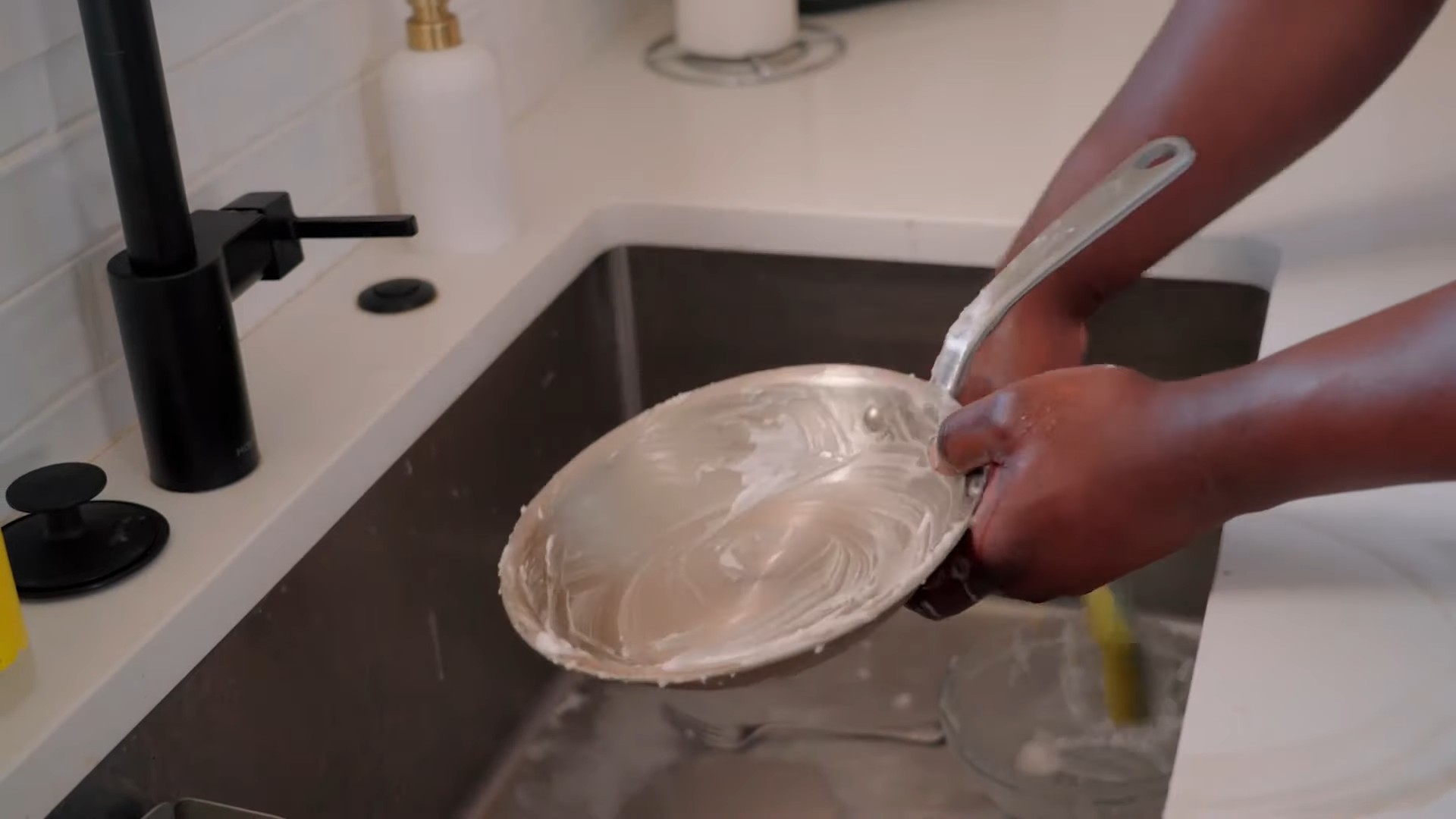
DIY Stainless Steel Cleaner: Baking Soda Magic!
Hey everyone! I’m so excited to share my go-to method for cleaning stainless steel appliances and surfaces using something you probably already have in your pantry: baking soda! Seriously, this stuff is a miracle worker. It’s cheap, non-toxic, and incredibly effective at removing grime, fingerprints, and even those stubborn water spots that plague our stainless steel. Forget those expensive commercial cleaners – let’s get started with this simple and effective DIY solution!
What You’ll Need:
Before we dive in, let’s gather our supplies. This is a super simple list, which is one of the many reasons I love this method!
* Baking Soda: The star of the show!
* Water: Plain old tap water works perfectly.
* Soft Cloths or Microfiber Towels: Avoid anything abrasive that could scratch your stainless steel.
* Spray Bottle (Optional): For easier application of the water.
* Bowl or Small Container: To mix the baking soda paste.
* Old Toothbrush (Optional): For tackling tough spots or crevices.
* White Vinegar (Optional): For extra cleaning power (use with caution – more on that later!).
* Olive Oil (Optional): For polishing and adding shine.
Understanding Stainless Steel Grain
Before we begin, it’s important to understand the grain of your stainless steel. Stainless steel has a brushed finish, and you’ll notice faint lines running in one direction. Always clean *with* the grain, not against it. This will prevent scratches and ensure a more even clean. Look closely at your appliance or surface to identify the grain direction.
Making the Baking Soda Paste
This is where the magic begins! We’re going to create a gentle abrasive paste that will lift away dirt and grime without damaging your stainless steel.
1. Combine Baking Soda and Water: In your bowl or small container, mix baking soda and water to form a paste. I usually start with about ¼ cup of baking soda and add water a little at a time until I get a consistency similar to toothpaste. You want it to be thick enough to spread easily but not so runny that it drips everywhere.
2. Adjust the Consistency: If your paste is too thick, add a tiny bit more water. If it’s too thin, add a little more baking soda. The goal is a smooth, spreadable paste.
Cleaning Your Stainless Steel
Now for the fun part! Let’s get that stainless steel sparkling.
1. Apply the Paste: Using a soft cloth or your fingers, gently apply the baking soda paste to the stainless steel surface. Make sure to cover the entire area you want to clean. Don’t be afraid to be generous with the paste, especially on areas with stubborn stains or fingerprints.
2. Work with the Grain: Remember that grain we talked about? Gently rub the paste into the surface *with* the grain. Use circular motions for heavily soiled areas, but always finish by wiping in the direction of the grain.
3. Let it Sit (Optional): For tough stains, you can let the paste sit for a few minutes (5-10 minutes should be enough). This allows the baking soda to work its magic and loosen the grime. However, don’t let it dry completely, as it will be harder to remove.
4. Rinse Thoroughly: Using a clean, damp cloth, rinse away all traces of the baking soda paste. You may need to rinse several times to remove all the residue. Make sure you’re using clean water each time to avoid spreading the grime around.
5. Dry Completely: This is crucial! Use a clean, dry microfiber towel to thoroughly dry the stainless steel surface. This will prevent water spots and streaks. Again, wipe *with* the grain.
Tackling Stubborn Spots
Sometimes, you’ll encounter spots that are a little more stubborn. Here’s how to deal with them:
1. Baking Soda and Water Paste (Again!): For particularly tough spots, create a slightly thicker paste of baking soda and water.
2. Targeted Application: Apply the thick paste directly to the stubborn spot.
3. Gentle Scrubbing: Using an old toothbrush or a soft cloth, gently scrub the spot in a circular motion. Be careful not to scrub too hard, as you could scratch the surface.
4. Rinse and Dry: Rinse away the paste with a clean, damp cloth and dry thoroughly with a microfiber towel.
Using Vinegar for Extra Cleaning Power (Use with Caution!)
While baking soda is fantastic on its own, you can add vinegar for an extra boost of cleaning power. However, it’s important to use this method with caution, as vinegar is acidic and can potentially damage some stainless steel finishes if used improperly.
1. Dilute the Vinegar: Always dilute the vinegar with water. A 50/50 solution is a good starting point.
2. Spray and Wipe: Pour the diluted vinegar solution into a spray bottle and lightly spray the stainless steel surface.
3. Wipe with a Soft Cloth: Immediately wipe the surface with a soft cloth, working *with* the grain.
4. Rinse Thoroughly: Rinse the surface with clean water to remove any vinegar residue.
5. Dry Completely: Dry the surface thoroughly with a microfiber towel.
Important Note: Never mix baking soda and vinegar in a closed container, as this will create a chemical reaction that can cause pressure to build up and potentially explode. Also, avoid using vinegar on stainless steel that has a protective coating, as it could damage the coating. Always test in an inconspicuous area first.
Polishing for Extra Shine
Want to give your stainless steel that extra sparkle? Here’s a simple polishing trick using olive oil:
1. Apply a Tiny Amount of Olive Oil: Place a very small amount of olive oil (a few drops is all you need) onto a clean, dry microfiber towel.
2. Buff the Surface: Gently buff the stainless steel surface *with* the grain.
3. Remove Excess Oil: Use a clean section of the microfiber towel to remove any excess oil.
This will leave your stainless steel looking shiny and new!
Cleaning Stainless Steel Sinks
Cleaning a stainless steel sink is very similar to cleaning appliances. Here’s a slightly modified approach:
1. Rinse the Sink: Start by rinsing the sink with warm water to remove any loose debris.
2. Sprinkle with Baking Soda: Generously sprinkle baking soda all over the sink surface.
3. Scrub with a Sponge: Use a non-abrasive sponge to scrub the sink, working in circular motions. Pay special attention to areas with stains or water spots.
4. Rinse Thoroughly: Rinse the sink thoroughly with warm water to remove all traces of baking soda.
5. Dry Completely: Dry the sink completely with a clean towel to prevent water spots.
6. Optional Vinegar Rinse: For extra shine and to remove any lingering odors, you can rinse the sink with a diluted vinegar solution (as described above). Remember to rinse thoroughly with water afterwards.
Preventative Measures
The best way to keep your stainless steel looking its best is to prevent it from getting too dirty in the first place. Here are a few tips:
* Wipe Up Spills Immediately: Don’t let spills sit on your stainless steel surfaces, as they can cause stains.
* Clean Regularly: Make it a habit to clean your stainless steel appliances and surfaces regularly, even if they don’t look dirty. A quick wipe-down with a damp cloth can go a long way.
* Avoid Abrasive Cleaners: Never use abrasive cleaners or scouring pads on stainless steel, as they can scratch the surface.
* Use a Stainless Steel Cleaner (Sparingly): If you prefer to use a commercial stainless steel cleaner, choose one that is specifically designed for stainless steel and follow the manufacturer’s instructions carefully.
Troubleshooting
* Streaks: If you’re getting streaks after cleaning, make sure you’re drying the surface thoroughly with a clean, dry microfiber towel. You may also need to rinse the surface more thoroughly to remove all traces of the cleaning solution.
* Scratches: If you accidentally scratch your stainless steel, there are products available that can help to minimize the appearance of scratches. However, it’s always best to prevent scratches in the first place by using gentle cleaning methods and avoiding abrasive cleaners.
* Rust: While stainless steel is resistant to rust, it can still rust under certain conditions. If you notice rust on your stainless steel, try cleaning it with a mixture of baking soda and water. If the rust is severe, you may need to use a commercial rust remover.
Final Thoughts
And there you have it! My simple and effective method for cleaning stainless steel with baking soda. I hope you found this guide helpful. Remember to always test any cleaning method in an inconspicuous area first, and always clean
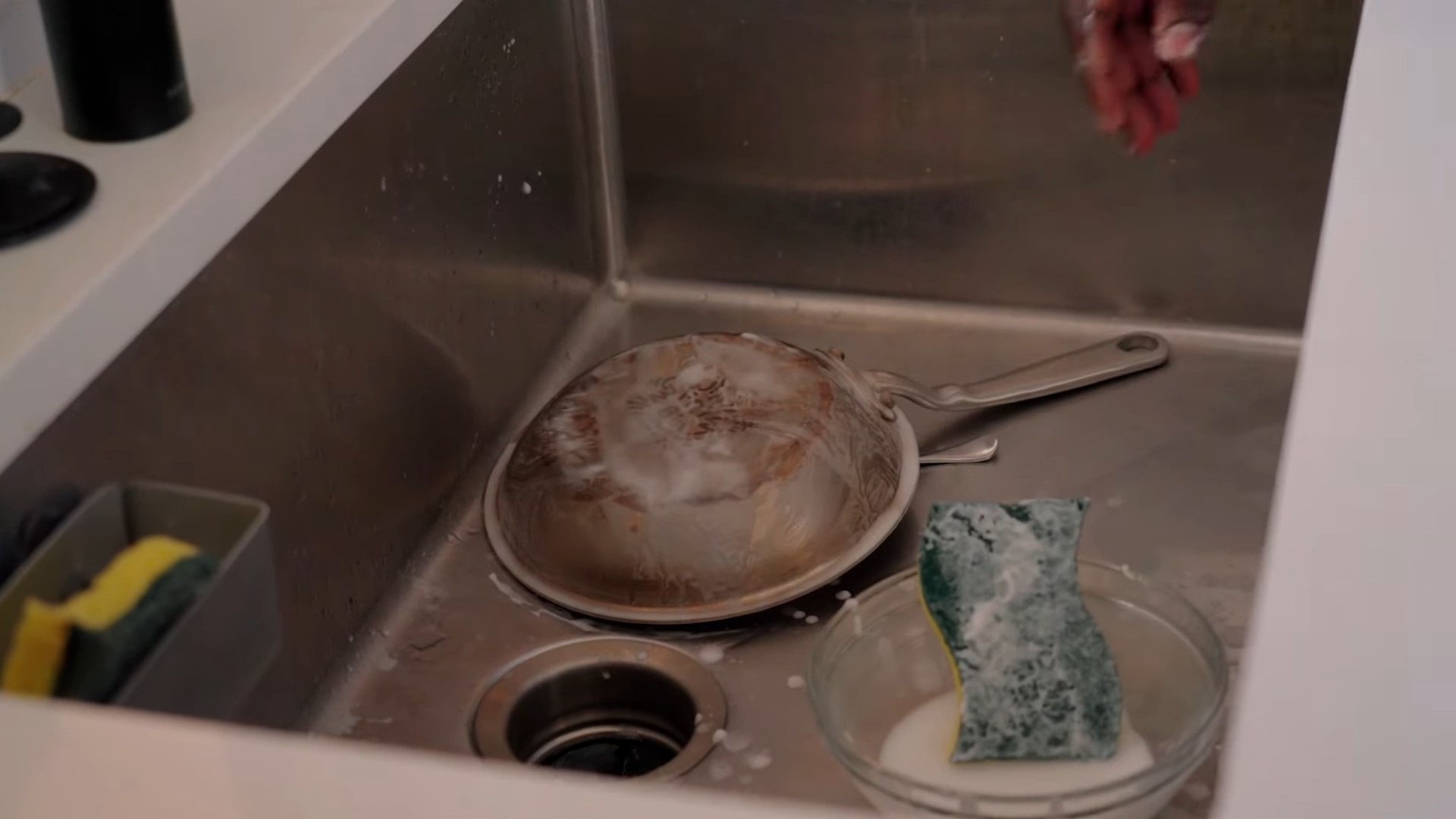
Conclusion
So, there you have it! This simple yet incredibly effective DIY trick using baking soda to clean stainless steel is a game-changer for anyone looking to maintain the pristine shine of their appliances and cookware. Forget expensive, chemical-laden cleaners that promise the world but often fall short. This method is not only cost-effective and environmentally friendly, but it also delivers remarkable results, leaving your stainless steel surfaces gleaming and free from stubborn stains and grime.
Why is this a must-try? Because it’s easy, accessible, and safe. You likely already have baking soda in your pantry, making it a readily available solution. It’s gentle enough to avoid scratching delicate surfaces, yet powerful enough to tackle even baked-on food residue. Plus, you’re avoiding harsh chemicals that can be harmful to your health and the environment.
But the beauty of this method lies in its versatility. While the basic paste of baking soda and water works wonders, you can experiment with variations to suit your specific needs. For instance, for extra stubborn stains, try adding a few drops of white vinegar to the paste. The fizzing action can help loosen the grime even further. Alternatively, for a pleasant scent, you can incorporate a few drops of your favorite essential oil, such as lemon or lavender, to the paste. Just be sure the essential oil is safe for use on surfaces that come into contact with food.
Another variation involves using a soft-bristled toothbrush for cleaning intricate areas or textured stainless steel surfaces. This allows you to get into those hard-to-reach spots and ensure a thorough clean. Remember to always test any variation on a small, inconspicuous area first to ensure it doesn’t damage the finish.
We’re confident that once you try this DIY baking soda clean stainless steel method, you’ll be amazed by the results. It’s a simple, effective, and sustainable way to keep your stainless steel looking its best.
Don’t just take our word for it, though! We highly encourage you to give this trick a try and share your experience with us. Let us know what variations you experimented with and what results you achieved. Your feedback will not only help us refine this method but also inspire others to embrace this eco-friendly cleaning solution. Share your before-and-after photos and cleaning tips in the comments section below. We can’t wait to hear from you!
Frequently Asked Questions (FAQs)
1. Is baking soda safe to use on all types of stainless steel?
Generally, yes, baking soda is safe to use on most types of stainless steel. However, it’s always a good idea to test it on a small, inconspicuous area first, especially if you have a brushed or textured finish. This will help you ensure that it doesn’t scratch or damage the surface. Avoid using excessive pressure when scrubbing, as this can also lead to scratches. If you’re unsure about the type of stainless steel you have, consult the manufacturer’s instructions or website.
2. Can I use baking soda to clean stainless steel appliances with a protective coating?
Some stainless steel appliances have a protective coating to resist fingerprints and smudges. While baking soda is generally gentle, it’s best to check the manufacturer’s instructions before using it on these surfaces. The abrasive nature of baking soda could potentially damage the coating over time. If the manufacturer advises against using abrasive cleaners, opt for a milder solution like dish soap and water.
3. How do I make the baking soda paste for cleaning stainless steel?
Making the baking soda paste is simple. In a small bowl, mix baking soda with water until you achieve a thick, spreadable paste. The ratio is typically about 3 parts baking soda to 1 part water, but you can adjust it to your preference. The paste should be thick enough to adhere to the stainless steel surface without being too runny.
4. How long should I leave the baking soda paste on the stainless steel before wiping it off?
The amount of time you leave the baking soda paste on the stainless steel depends on the severity of the stains. For light stains and grime, a few minutes (5-10) should suffice. For more stubborn stains, you can leave the paste on for up to 15-20 minutes. However, avoid letting the paste dry completely, as this can make it harder to remove.
5. What type of cloth should I use to wipe off the baking soda paste?
A soft, non-abrasive cloth is ideal for wiping off the baking soda paste. Microfiber cloths are a great option, as they are gentle on surfaces and effectively remove residue. Avoid using abrasive scrub pads or steel wool, as these can scratch the stainless steel.
6. How often should I clean my stainless steel with baking soda?
The frequency of cleaning depends on how often you use your stainless steel appliances and cookware. For items that are used daily, cleaning them once or twice a week with baking soda can help prevent the buildup of stains and grime. For items that are used less frequently, cleaning them as needed is sufficient.
7. Can I use baking soda to remove rust from stainless steel?
While stainless steel is resistant to rust, it can still develop surface rust under certain conditions. Baking soda can be effective in removing light surface rust. Apply the baking soda paste to the affected area, let it sit for a few minutes, and then scrub gently with a soft cloth or brush. For more severe rust, you may need to use a specialized rust remover.
8. What are some other uses for baking soda in cleaning?
Baking soda is a versatile cleaning agent with numerous uses beyond cleaning stainless steel. It can be used to deodorize refrigerators, clean ovens, unclog drains, and remove stains from clothing. Its mild abrasive properties make it effective for scrubbing surfaces without causing damage.
9. Can I use baking soda to clean stainless steel sinks?
Yes, baking soda is excellent for cleaning stainless steel sinks. Sprinkle baking soda into the sink, then scrub with a damp sponge or cloth. Rinse thoroughly with water. For extra cleaning power, you can add a few drops of dish soap to the baking soda.
10. What should I do if the baking soda paste leaves a residue on my stainless steel?
If the baking soda paste leaves a residue, simply wipe the surface again with a clean, damp cloth. You may need to rinse the cloth several times to remove all the residue. You can also use a solution of water and white vinegar (1:1 ratio) to help remove any stubborn residue. Finally, dry the surface with a clean, dry cloth to prevent water spots.


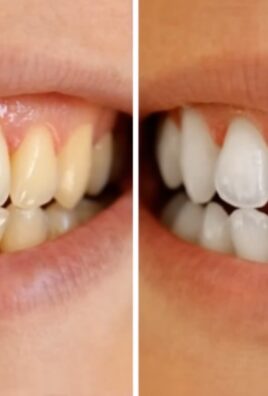
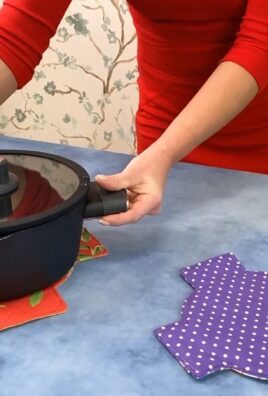
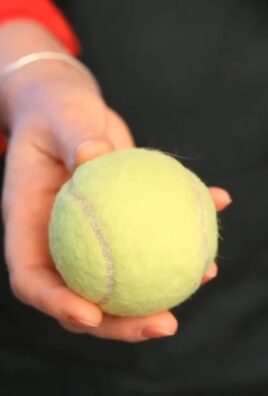
Leave a Comment